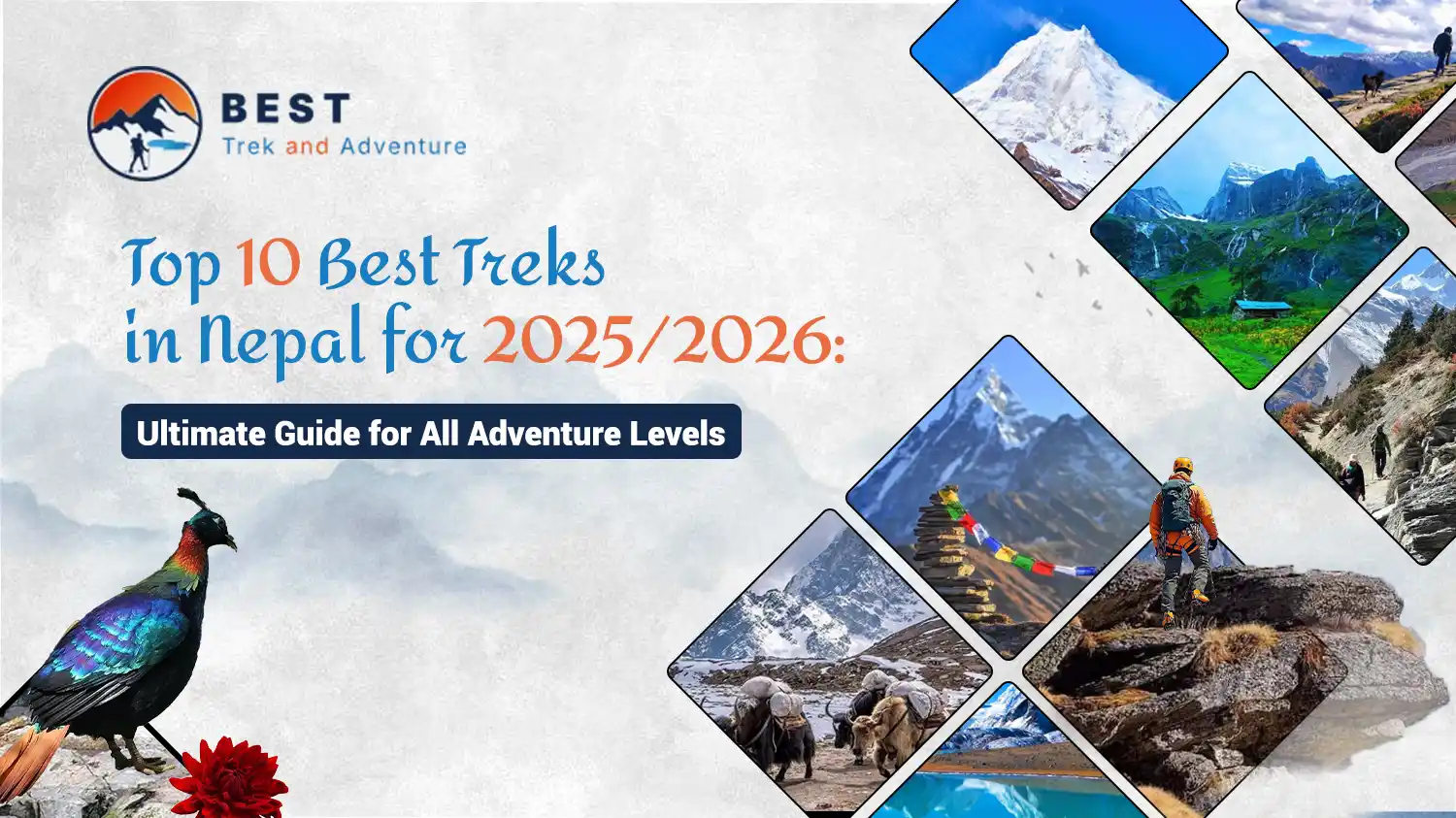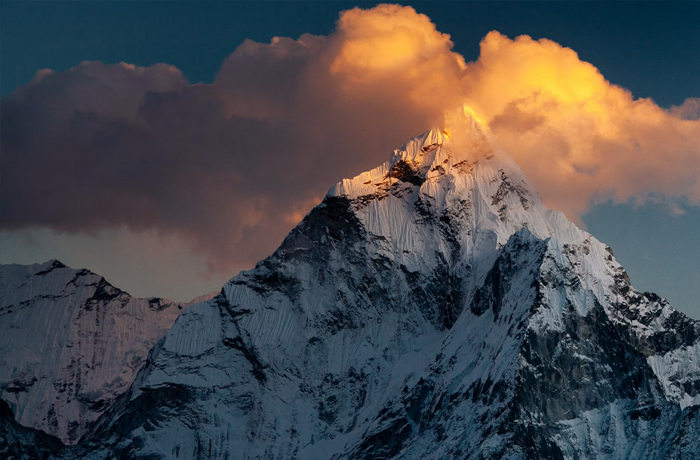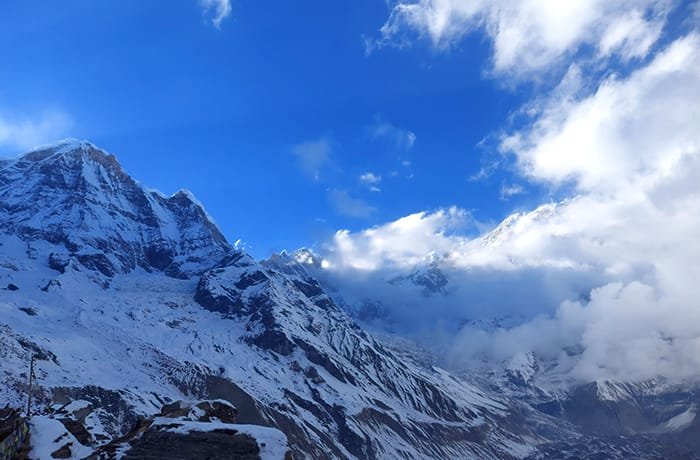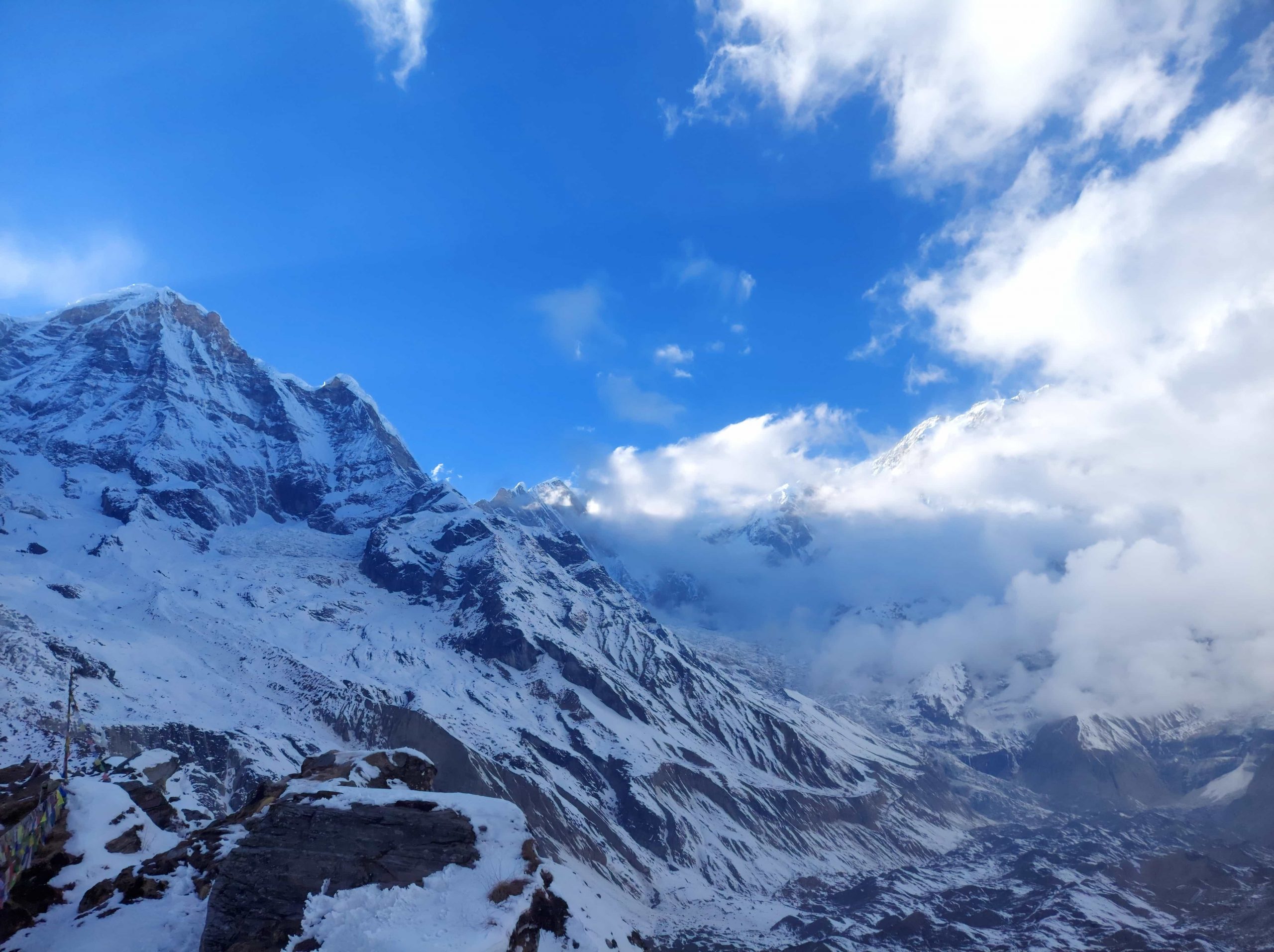Manaslu circuit trek is perhaps one of the most underrated adventure treks of Nepal, situated in the remote western Himalayas. On the other hand, Everest Base Camp or Annapurna Circuit are among those iconic trails where a great number of trekkers arrive, but Manaslu is a remote, untouched, and component-rich route towards experiencing nature.
Mansalu trekking is all about 14-18 days of complete circling of Mount Manaslu, 8,163 m, the eighth-highest in the world. It consists of rugged mountain terrain, ancient Tibetan Buddhist villages, and, as icing on the cake, the well-known Larkya La Pass, above 5,100 m. It’s a trek made for trekkers seeking challenge, reality, and breathtaking Himalayan views far from the sound of tourist traffic.
What Makes the Manaslu Circuit Trek Underrated?
- Peaceful Trails with Smaller Crowds: With fewer trekkers, the trekking experiences are much more authentic and peaceful; this is the result of limited permits and remoteness.
- Cultural Richness: These Tibetan-style towns reflect the features of ancient Tibetan Buddhist culture with aesthetic manifestations still intact.
- Dramatic and Diverse Landscapes: From subtropical forests and deep river gorges down to alpine meadows and high-altitude deserts.
- Difficult Yet Accessible: Steep mountain terrain with several easy acclimatization days.
What Again Makes the Manaslu Circuit Trek So Special?
Remote Wilderness and Scenic Majesty:
- The Manaslu region is situated in the Gorkha district, which lies inside the Manaslu Conservation Area.
- And its ancient salt-trading route follows the Budhi Gandaki River, giving you a sense of history and timelessness.
- On your journey, you’ll encounter possibilities of more than 10 peaks over 6,500 metres, with some above 7,000 metres.
- The high point is Larkya La Pass, around 5,106 m (16,752 ft).
Cultural Richness:
- Trekking through isolated villages such as Samagaun, Samdo, and Namrung, where Tibetan Buddhist, Gurung and Tamang characteristics intermix.
- These communities are less commercialized than those in other popular trekking areas; hence, you will get authentic experiences of the culture of this region of the Himalayas.
Conservation & Biodiversity:
- The entire area falls into the Manaslu Conservation Area Project (MCAP) established for the protection of wildlife and to promote sustainable tourism.
- Due to its isolation, flora and fauna are well conserved, so you might get some glimpses of very rare Himalayan species.
Planning for Manaslu Circuit Trek: Key Insights
Permits and Regulations
Manaslu, being a restricted area for trekking, hiring a licensed guide and permits is mandatory.
Required Permits:
- Manaslu Restricted Area Permit (RAP): ~USD 100 for the first 7 days in peak season and USD 15 for subsequent days.
- Manaslu Conservation Area Permit: About USD 30.
- Annapurna Conservation Area Permit (ACAP): overlapping part of the trek, the permit is about USD 30.
Usually, permits can be arranged through a registered trekking agency.
Cost Breakdown
Here is a rough approximation of what to spend on behalf of one:
- Permits & Guide: As above-mentioned plus guide cost (~USD 25-35/day).
- Accommodation & Food: Teahouse lodges: around ~USD 6–10/night; meals: ~USD 6–9/day (prices are generally higher in the remote high altitude spots).
- Transport: A jeep or bus from Kathmandu to the trek start (Soti Khola) and return from Dharapani/Besisahar costs some $30–50, depending on agency/vehicle.
- Estimate for Total Cost: ~$1,150–1,680 for a standard average trek for 13 days or more.
While this is amongst the more expensive treks for mainstream tourists, many trekkers feel that the solitude, beauty, and authenticity are well worth the extra cost.
Best Time to Take This Trek
Choosing the right season can either make or break your Manaslu experience :
- Autumn (September-November): In the best regard, this is considered the best season as it has clear, stable skies where weather conditions are also perfect for passing Larkya La.
- Spring (March-May): Another splendid rhododendron forest in full bloom, bright long days-and excellent weather.
- Monsoon (June-August): Unsafe-dirty trails, landslides are possible, and leeches are lower down.
- Winter (December-February): It can be very cold and, at times, passes are snowed in. Not recommended for those who do not have winter trekking experience.
Difficulty and Challenges
The Manaslu Circuit Trek is easy to moderately difficult, depending on your fitness and experience:
1. Altitude & Acclimatization
- Starting altitude: ~700 m (Soti Khola), rising gradually up to Larkya La.
- High-risk zones: Above ~3,500 m (e.g., Samagaon at 3,530 m, Samdo at ~3,865 m) are common resting/acclimatization spots.
- Signs of altitude sickness worsen (AMS): headache, nausea, fatigue-proper acclimatization is important.
2. Terrain and Trail Conditions
- Rugged trails: rocky paths, scree, narrow ridgelines, and possible snow near the pass.
- Suspension bridges, landslide zones, and water crossings are very common.
- The day when most tests are conducted is crossing Larkya La Pass early in the morning to the last steep ascent.
3. Weather Conditions
- Monsoon rains, winter snows, or strong winds at high altitudes confirm that the season makes a lot of difference.
- Temperatures can drop below -10 °C are possible at high altitudes.
- Remoteness: limited exit options, sparse medical facilities, and weak communication.
Hence, self-sufficiency is important.
4. Mental & Logistical Preparation
- Long days with less comfort and unpredictable environments require mental toughness.
- Hiring a good and experienced guide and possibly hiring a porter can also be greatly beneficial.
- Emergency plan: carry a first-aid kit, altitude medicine (after consulting with a doctor), and consider insurance that covers rescue.
Complete 14-Day Manaslu Circuit Trek Itinerary
Day 1: Drive from Kathmandu to Soti Khola (710 meters)
- Drive Duration: 7–9 hours.
- Transport mode: Preferred Private Jeep, or Local Bus.
- Highlights include: The scenic countryside, Trishuli River views, terraced fields, and rural villages.
- Overnight at: Soti Khola
This is a long and bumpy ride that sets the bar for the deserted beauty of the Manaslu region.
Day 2: Trek from Soti Khola to Machha Khola (870 m)
- Travelling Hours: 5 to 6 hours
- Trail Highlights: Cliffside paths, waterfalls, suspension bridges.
- Overnight: Machha Khola
The warm begins with fresh green forests and river banks, making trekking refreshing.
Day 3: Trek from Machha Khola to Jagat (1,340 m)
- Trekking hours: 6 to 7 hours
- Attractions: Hot springs at Tatopani, stone staircases, entry to Manaslu Conservation Area
- Overnight: Jagat
Jagat is a beautiful stone-built village where they check your permits.
Day 4: Trek from Jagat to Deng (1,860 m)
- Trekking hours: 6 to 7 hours
- Highlights: Bridges, river gorge, the first glimpse of Tibetan lifestyle
- Overnight: Deng
You enter more Buddhist-influenced settlements, and the terrain starts to open up.
Day 5: Trek from Deng to Namrung (2,630 m)
- Trekking Hours: 6-7 hours
- Highlights: Mani walls, forested trails, high cliffs, culture-rich villages
- Overnight: Namrung
Namrung offers great mountain views and a more comfortable teahouse experience.
Day 6: Trek from Namrung to Lho (3,180 m)
- Trekking Hours: 4-5 hours
- Highlights: Himal Chuli and Ganesh Himal provide stunning views; ancient monasteries
- Overnight: Lho
A short day to assist with altitude acclimatization, and enjoy Tibetan architecture.
Day 7: Trek from Lho to Samagaon (3,530 m)
- Trekking Hours: 4-5 hours
- Highlights: Huge pastureland, Outrageous view of Mt. Manaslu.
- Overnight: Samagaon
One of the top vistas in the region, and an excellent vantage point to relax.
Day 8: Acclimatization Day-Explore Samagaon
Recommended Activities:
- Hike to Manaslu Base Camp (4,800 m) –a bit difficult but worth it (7 through 8 hrs roundtrip)
- OR visit Pungyen Gompa (the beautiful cultural monastery)
- OR short hike around glacial lakes
This is a day that really counts against altitude sickness before ascending higher.
Day 9: Trek from Samagaon to Samdo (3,860 m)
- Trekking Hours: 3–4 hours
- Attractions: Sparse landscapes, yak pastures, panoramic views
- Overnight: Samdo
Shorten the length of the hike for better acclimatization. Samdo is a former Tibetan refugee village.
Day 10: Acclimatization Day in Samdo
Optional Hikes:
- Tibet Border Ridge Hike (~5,000 m ) – best for acclimatization
- Explore side valleys and viewpoints
Rest well here before approaching that high pass.
Day 11: From Samdo to Dharamsala/Larke Phedi (4,460 m)
- Trek Duration: 4-5 hours
- Highlights: Glacial valleys, along with mani walls and mountain vistas
- Overnight: Dharamsala
Basic accommodation and rest before the big crossing.
Day 12: Cross Larkya La Pass (5,160 m) → Track to Bimthang (3720 m)
- Trekking Hours: 8-10 hours
Highlights:
- An early morning ascent.
- Viewing the Himlung Himal, Cheo Himal, and Kang Guru in all their glory.
- The pass is often snow-covered in colder months.
Overnight: Bimthang
The trek is long, challenging, and demanding, but this will be the most rewarding section of the entire trek.
Day 13: Trek from Bimthang to Dharapani (1,860 m)
- Trekking Hours: 6-7 hours
- Highlights: Descending through waterfalls and grazing fields from the rhododendron forests.
- Overnight: Dharapani
Back on the Annapurna Circuit route, though with more comfortable amenities.
Day 14: Drive Dharapani → Besisahar → Kathmandu
- Travelling Duration: 8-10 hours in total
- Route: Jeep from Dharapani → Besisahar → Kathmandu
And this is where your trek ends back into the capital, and an unforgettable experience in the Himalayas.
The iconic Larkya La Pass – the highest point of the trek
It is the physically and spiritually most important point of the trek at the of 5,106 meters. The challenging climb rewards you with staggering panoramic views of Mount Manaslu, Annapurna II, Himlung Himal, and other towering giants. Crossing this pass marks an unforgettable achievement on your Himalayan adventure.
Accommodation and Food
The accommodation provided in this trek consists of very basic Teahouse accommodations: twin rooms, shared bathrooms, and very few facilities. The meals served are combinations of both Nepali and Tibetan cuisines: dal bhat, momos, noodles, soups, etc. There would be many vegetarian alternatives as well, so carry some extra snacks and hydrating fluids with you.
Cultural Insights
Monasteries, chortens, prayer flags, and mani walls are mere evidence of upholding the old Tibetan culture. Respect the sanctity of areas of meditation; always ask before taking pictures of the locals. The Nubri and Tsum Valleys provide great opportunities for spiritual and cultural immersion.
Practical Tips for Beginner Trekkers
- Pre-Trek Training: Exercise your cardiovascular system; hike with a backpack; altitude simulation, if possible.
- Gear Checklist: Bring warm clothing, solid boots, trekking poles, a good sleeping bag, and hydration systems.
- Health Precautions: Speak to your doctor about the prevention of altitude sickness (AMS); carry Diamox only at the instruction of the doctor.
- Health Precautions: Talk to your doctor about altitude sickness prevention (AMS): Diamox is carried only under the directive of the doctor.
- Local support: Always hire a registered guide; do not trek alone.
- Insurance: Ensure that the travel insurance taken can facilitate high-altitude trekking and evacuation.
- Plan for Buffer Days: Any adverse weather or acclimatization might affect the itinerary, so build in some rest days.
- Respect for the local culture: Observe the traditions; ask for permission before taking pictures of people; support local teahouses in this regard.
Conclusion
Manaslu Circuit Trek is, beyond doubt, one of the most underrated high-altitude excursions into the Himalayas of Nepal. It demands more from permits to physical effort and planning-but gifts the traveller with unparalleled wilderness experience, touching cultural exchanges, and the raw beauty of the Himalayas unfiltered by tourism.
For adventurers wishing to go beyond the beaten path, this trek is not merely a choice but an invitation to slow down, soak in the experience, and find something truly valuable.
If you are prepared for this life-changing Himalayan journey, Best Trek And Adventure is here to guide you every step of the way, from planning, obtaining permits and to a safe and pleasurable trek.












